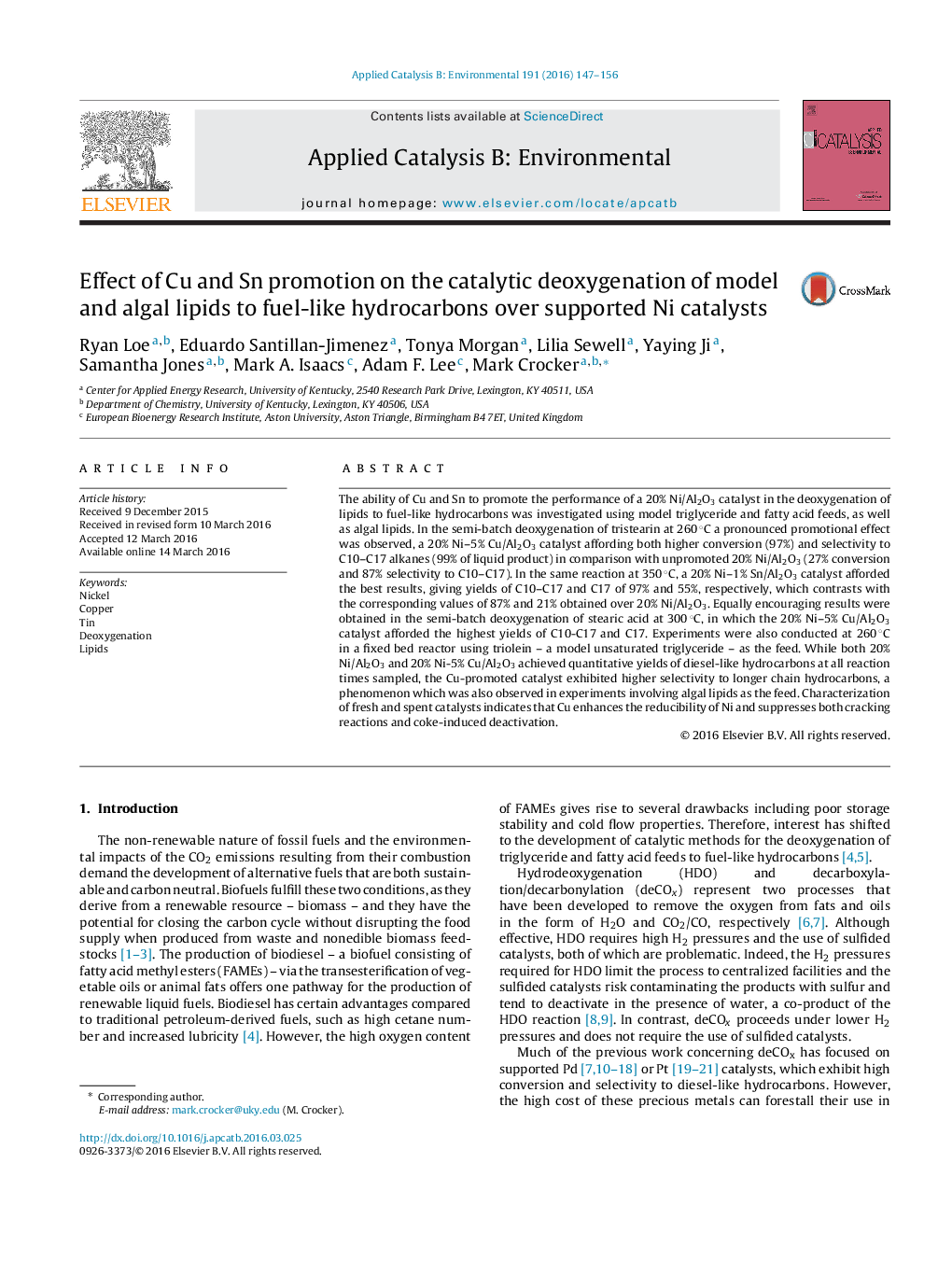| Article ID | Journal | Published Year | Pages | File Type |
|---|---|---|---|---|
| 44815 | Applied Catalysis B: Environmental | 2016 | 10 Pages |
•Supported Ni catalysts used to convert lipids to diesel were promoted with Cu or Sn.•Addition of 5% Cu to 20% Ni/Al2O3 resulted in pronounced promotion effects.•Cu improved Ni reducibility, leading to more active Ni0 sites and higher conversion.•Cu curbed cracking, leading to higher selectivity to diesel and reduced deactivation.•Cu promotion was observed in semi-batch and continuous runs involving various lipids.
The ability of Cu and Sn to promote the performance of a 20% Ni/Al2O3 catalyst in the deoxygenation of lipids to fuel-like hydrocarbons was investigated using model triglyceride and fatty acid feeds, as well as algal lipids. In the semi-batch deoxygenation of tristearin at 260 °C a pronounced promotional effect was observed, a 20% Ni–5% Cu/Al2O3 catalyst affording both higher conversion (97%) and selectivity to C10–C17 alkanes (99% of liquid product) in comparison with unpromoted 20% Ni/Al2O3 (27% conversion and 87% selectivity to C10–C17). In the same reaction at 350 °C, a 20% Ni–1% Sn/Al2O3 catalyst afforded the best results, giving yields of C10–C17 and C17 of 97% and 55%, respectively, which contrasts with the corresponding values of 87% and 21% obtained over 20% Ni/Al2O3. Equally encouraging results were obtained in the semi-batch deoxygenation of stearic acid at 300 °C, in which the 20% Ni–5% Cu/Al2O3 catalyst afforded the highest yields of C10-C17 and C17. Experiments were also conducted at 260 °C in a fixed bed reactor using triolein – a model unsaturated triglyceride – as the feed. While both 20% Ni/Al2O3 and 20% Ni-5% Cu/Al2O3 achieved quantitative yields of diesel-like hydrocarbons at all reaction times sampled, the Cu-promoted catalyst exhibited higher selectivity to longer chain hydrocarbons, a phenomenon which was also observed in experiments involving algal lipids as the feed. Characterization of fresh and spent catalysts indicates that Cu enhances the reducibility of Ni and suppresses both cracking reactions and coke-induced deactivation.
Graphical abstractFigure optionsDownload full-size imageDownload as PowerPoint slide
